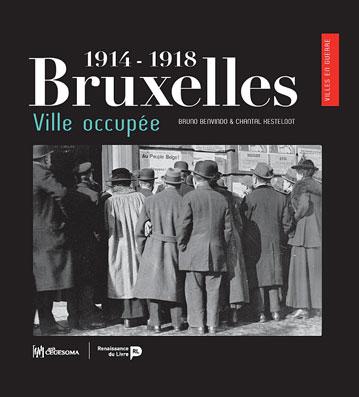Bruxelles ville occupée 1914-1918 (Brussels, Occupied City 1914-1918)

It is through the image that the authors of Bruxelles ville occupée 1914-1918 dare to recount the experiences of the inhabitants of Brussels during the First World War. They explore how photography, the postcard or the illustrated press reflect the issues of this troubled time period*.
Brussels, August 1914. The city falls into war. Scenes of panic, patriotic outbursts, influx of refugees, so many images that prevail in a capital yet spared by the fighting. Very quickly, the occupier settles down and parades through the city. Brussels will be the largest occupied city in Europe for the next four years.
Through unpublished photographs, postcards circulating during the occupation or the illustrated press of the time* [voir ci-dessus : répétition nécessaire?], Bruno Benvindo and Chantal Kesteloot recount the visual history of Brussels that experiences hunger and unemployment, but where everyday life also resumes its course.
As for the German troops, they are trying to create in the Belgian capital a “small homeland”, with its theaters, cinemas, cafes. But occupied Brussels, means also patriots and activists who fight for public space, tenants who can no longer pay their rent or workers deported to Germany. How does the image reflect such issues?
In November 1918, the capital is liberated. It is a time of commemoration, but also of housing crisis, difficult reunion or impossible mourning. If peace has returned, the war is not yet over.
A fresh look at the First World War !